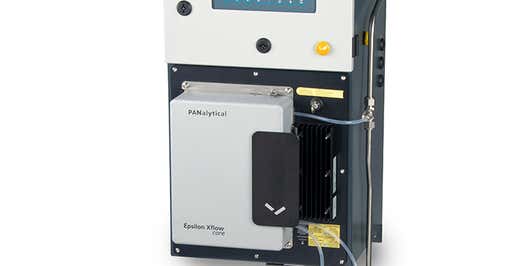What is sulfur analysis?
Sulfur analysis involves various methods of detecting, quantifying, and identifying the presence of sulfur in a sample. It is an important analytical technique that is used in various industries, including petrochemicals, energy, mining, and pharmaceuticals. Accurate sulfur analysis is crucial for ensuring compliance with environmental regulations, quality control of products, and safety of operations.
It plays a critical role in many industrial processes, including the production, transport, and consumption of fuels. The concentration of sulfur in fuels has a significant impact on their quality, performance, and emissions. For example, high levels of sulfur in fuels lead to increased levels of acid rain, which have harmful effects on human health and the environment.
Furthermore, the accurate determination of sulfur content in various materials can help to identify potential hazards, evaluate the effectiveness of remediation efforts, and monitor the quality of products. Overall, sulfur analysis is a valuable tool for ensuring the safety, quality, and sustainability of various industrial processes.
Different analysis methods
There are several methods of sulfur analysis that are used in various industries, each with its own advantages and limitations. Some of the most common methods of sulfur analysis include: XRF, UV fluorescence spectroscopy, Combustion or Wickbold and ICP OES.
X-Ray Fluorescence analysis of Sulfur Content
X-ray fluorescence (XRF) spectrometry is a non-destructive method for sulfur analysis that uses the interaction between X-rays and the sample to determine the sulfur content. This method is often used for the analysis of solid materials, such as metals, minerals, and ceramics. XRF is fast, accurate, and requires minimal sample preparation, making it a popular choice for routine sulfur analysis.
The benefit of XRF spectrometry is that it yields the total sulfur composition regardless of which compounds the sulfur atoms are present. This makes XRF unique and very powerful compared to other techniques.

Epsilon 1 for Ultra Low Sulfur (ULS)
Inductively coupled plasma optical emission spectroscopy
Inductively coupled plasma optical emission spectroscopy (ICP-OES) is a technique that involves the ionization of a sample in a high-temperature plasma and the subsequent analysis of the emitted light.
This method is often used for the analysis of liquid samples, including water and other liquids, such as oils and fuels, providing accurate results with high precision.
ICP-OES can also analyze other elements simultaneously with sulfur, making it a versatile method.
ASTM International, ISO and National Method for sulfur analysis
New and improved sensitivity for compliant analysis without helium: Live demonstration analyzing sulfur in automotive fuels
Several Standards Development Organizations have established methods for sulfur analysis, including several ISO 13032, ISO 20847 ISO 20884, ISO 14596, ASTM D4294 and ASTM D5453 test methods.
These methods involve various techniques, such as combustion, ultraviolet fluorescence, and X-ray fluorescence, and are widely used in the petroleum industry for regulatory compliance and quality control purposes.
Elemental analysis of sulfur
Sulfur is an important element that is found in various materials, including fuels, minerals, and organic compounds. The accurate determination of sulfur content and its chemical form is crucial for many applications, including environmental monitoring, quality control, and process optimization.
Elemental analysis is a powerful method for identifying the elemental composition of a sample, including sulfur.
Sulfur detection methods
The most common methods of detection of sulfur in organic compounds are spectroscopic techniques, such as infrared (IR) spectroscopy, UV Fluorescence (UVF), and X-ray Fluorescence (XRF). IR spectroscopy can detect the characteristic vibrational modes of sulfur-containing functional groups, such as thiol (-SH), sulfide (-S-), and sulfoxide (-SO-) groups. XPS can provide information about the chemical environment and oxidation state of sulfur atoms in organic compounds, which is important for understanding their reactivity and stability.
Other methods of detection of sulfur in organic compounds include chromatographic methods, such as gas chromatography (GC) and liquid chromatography (LC). GC can separate and detect sulfur-containing compounds based on their volatility and chemical properties, while LC can separate and detect sulfur-containing compounds based on their polarity and chemical properties.
-
- Sulfur Species Analysis
- Sulfur species analysis is a specialized technique used for the identification and quantification of different forms of sulfur in organic compounds, such as, sulfate, sulfite, and thiosulfate. This technique involves the separation and detection of different sulfur species using chromatographic methods, such as ion chromatography (IC) or high-performance liquid chromatography (HPLC), coupled with a detection method, such as UV-Vis spectrophotometry or mass spectrometry (MS). Overall, the identification of sulfur in organic compounds is an important application of sulfur analysis, which can provide valuable information about the biological functions and chemical properties of organic molecules. The methods of detection of sulfur, such as spectroscopic techniques and chromatographic methods, can provide sensitive and accurate detection of sulfur-containing compounds, while sulfur species analysis can provide detailed information about the different forms of sulfur in organic compounds.
- Sulfur Purity
- Sulfur purity testing is an important application of sulfur analysis, which involves the measurement of the purity and quality of sulfur samples. The purity of sulfur samples can be affected by various factors, such as impurities, moisture content, and particle size, which can have a significant impact on their performance in different applications, such as in the production of fertilizers, chemicals, and fuels.
Sulfur testing
Sulfur testing is a common method used for the determination of sulfur purity, which involves the measurement of the sulfur content in a sample using different analytical techniques, such as combustion analysis or X-ray fluorescence (XRF).
Combustion analysis can provide accurate and precise measurement of the sulfur content in solid and liquid samples, while XRF can provide rapid and non-destructive analysis of sulfur content in solid and liquid samples.
Other methods of sulfur testing include titrimetric methods, such as iodometry and oxidation-reduction titration, and gravimetric methods, such as precipitation and volatilization. These methods are often used for the determination of sulfur content in high-purity samples, such as sulfuric acid and sulfur dioxide.
Our sulfur testing equipment
Sulfur testing in fuels is another important application of sulfur analysis, which can provide valuable information. The use of advanced sulfur analyzers, such as the Epsilon 1 Sulfur in fuels, Epsilon 1 for ultra-low sulfur and Zetium Petro can provide accurate and reliable results.
Zetium Petro uses Wavelength Dispersive X-ray fluorescence and is THE standard in fuel analysis. Compliant with the most used standard test method for sulfur in fuel analyses, ASTM D2622, the Zetium is used in many refineries as the umpire in disputes on sulfur content.
The Epsilon 1 Sulfur in Fuels is a powerful tool for the rapid and accurate determination of sulfur content in a wide range of liquid fuels, including gasoline, diesel, jet fuel, and biofuels. This instrument uses energy-dispersive X-ray fluorescence, which can provide fast and reliable results with minimal sample preparation.
Our Epsilon 1 for Ultra-Low Sulfur is a specialized instrument for the determination of ultra-low sulfur content in fuels, such as diesel and gasoline. This instrument is based on the same EDXRF technology as the Epsilon 1 Sulfur in Fuels, but with enhanced sensitivity and precision for low-level sulfur analysis. It is a higher power system, with (Patent Pending) vanadium anode X-ray tube and detector technologies.
Both the Epsilon 1 Sulfur in Fuels and Epsilon 1 for Ultra-Low Sulfur are designed to meet the regulatory requirements for sulfur testing in fuels, including ASTM D4294. The Epsilon 1 for Ultra-Low Sulfur also meets ISO 13032 requirements.





